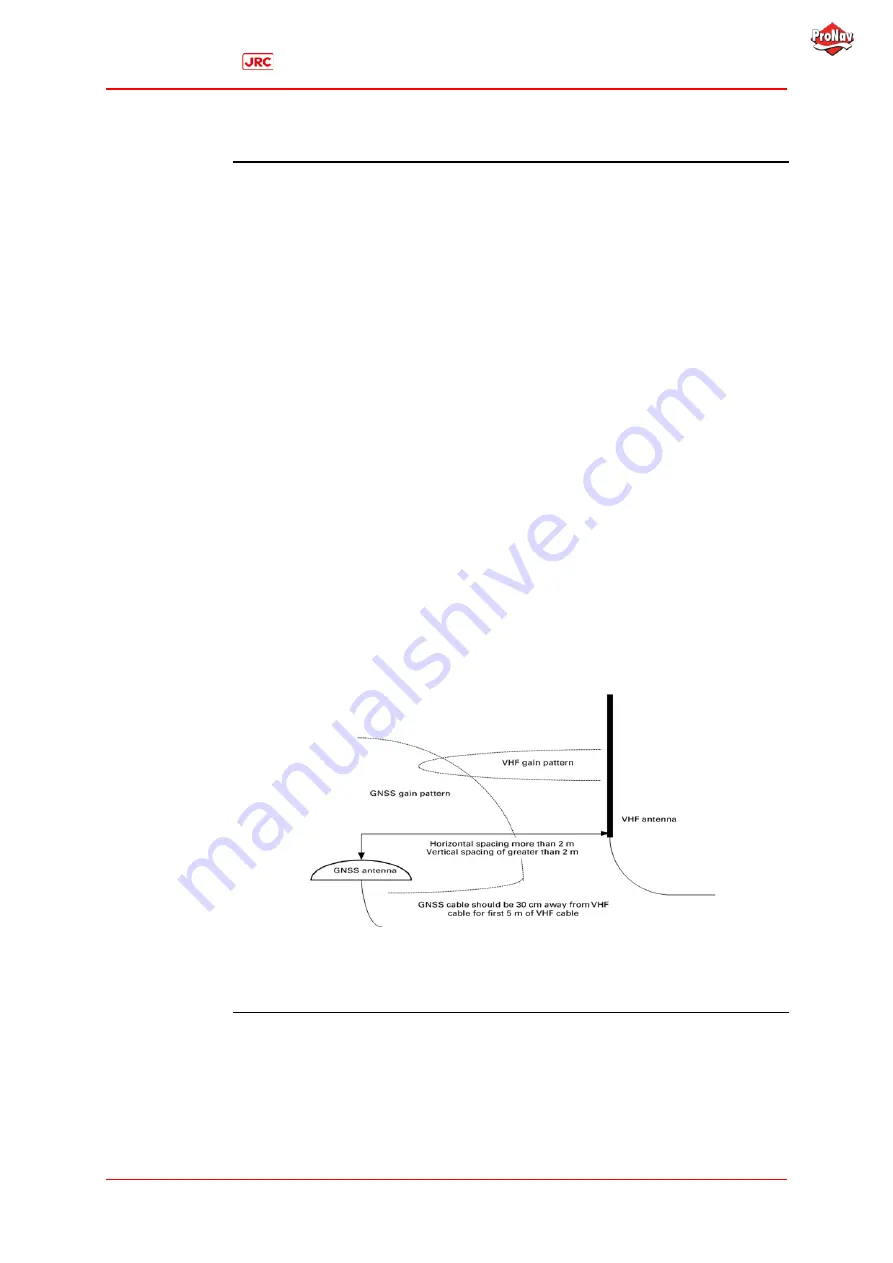
ProNav Norway – a
Company
page 21
Rev.2
10.02.2020
Mounting the V200n
,
Continued
VHF
interference
VHF interference from such devices as cellular phones and radio
transmitters may interfere with GPS operation, however the Vector
compass can still track other constellations, maintaining heading and
position.
For example, if installing the V200n near marine radios, consider the
following:
•
VHF marine radio working frequencies (Channels 1 to 28 and 84 to 88)
range from 156.05 to 157.40 MHz. The L1 GPS working center
frequency is 1575.42 MHz. The bandwidth is +/- 2MHz to +/- 10 MHz,
which is dependent on the GNSS antenna and receiver design.
•
VHF marine radios emit strong harmonics. The 10th harmonic of VHF
radio, in some channels, falls into the GPS working frequency band,
which may cause the SNR of GNSS to degrade significantly.
•
The radiated harmonic signal strength of different brands/models
varies.
•
Follow VHF radio manufacturers’ recommendations on how to mount
their radios and what devices to keep a safe distance away.
•
Handheld 5W VHF radios may not provide suitable filtering and may
interfere with the V200n’s operation if too close.
Before installing the Vector Compass, use the following diagram to
ensure there are no nearby devices that may cause VHF interference.
Figure 2-2: V200n distance from nearby VHF radios
Continued on next page
















































